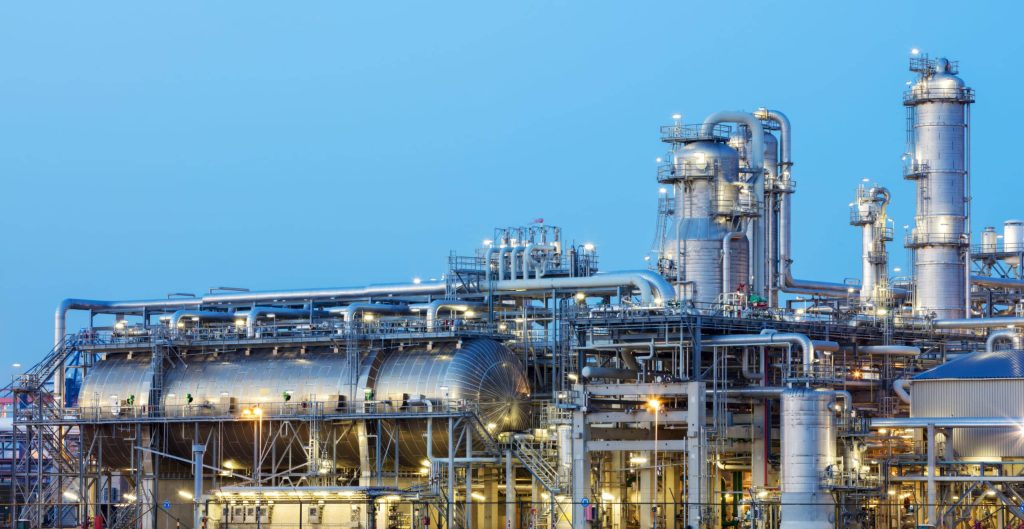Mining

Coal, gold, silver, copper, iron, lead and zinc, aluminum, nickel, phosphorus, potassium, and other minerals can be mined, processed, and disposed of using polyacrylamide. Its primary objective is to enhance the solid-liquid separation and recovery rate..
The optimal concentration for this product’s solution is between 0.1 and 0.5 percent. When dissolving, evenly sprinkle 1 kilogram of anionic polyacrylamide into the water while stirring. After one hour, filter the solution through a 40-mesh sieve. Dilute with water before use.
ALUMINIUM
Prior to the manufacturing of alumina, the mineral is broken into pieces with a radius of less than 1 millimeter. Inject a high-temperature, high-pressure sodium hydroxide solution into the system. In this highly corrosive liquid, only aluminum and silicon that is soluble can be dissolved, whereas impurities will not dissolve.
Adding anionic polyacrylamide flocculant to the primary thickening tank in order to get clear overflow is a crucial step in the recovery of aluminum.
Thus, the aluminum-rich overflow from the primary thickening tank must be treated (filtered, cooled, and precipitated) to yield aluminum.
COAL INDUSTRY
Typically, flotation is used to obtain clean coal with a high combustion value.
Due to the disparity in proportion of coal particle and impurity in water, coal mine will float on the water’s surface while impurities will precipitate at the bottom of the container.
After further processing, clean coal is obtained.
In the procedure described above, impurities can be eliminated and water can be recycled.
Polyacrylamide can serve as a flocculant to increase the efficiency of water and impurity separation.
GOLD AND SILVER INDUSTRY
After the ore has been crushed, an anionic polyacrylamide flocculant can be added to the thickener to reduce the Solid content (percent), and then the substance at the bottom can be filtered through a series of filters.
Polyacrylamide should be added to the thickener prior to filtering.
LEAD AND ZINC INDUSTRY
By calcination, minerals can be oxidized to zinc oxide.
Next, dissolve the oxide with sulfuric acid and filter.
All mines can be dissolved in acid with a PH between 5 and 2.5.
In the lead and zinc filtering process, the usage of anionic polyacrylamide flocculant may effectively promote the quick subsidence of mineral and the clarifying of the filtrate, as well as increase the production efficiency of the process and prevent mineral loss.
COPPER INDUSTRY
For further settlement, the pulp or tailings from the flotation cell must enter the thickening tank. A flocculant can be added to promote subsidence and achieve overflow. The acquired overflow can be used for recirculation. The remaining concentrated tailings will be put into a centrifuge for centrifuge dewatering, where anionic polyacrylamide will be used as centrifuge additives. Adding an anionic polyacrylamide flocculant improves sedimentation and filtering efficiency. Copper concentration obtained from a cleaned mine or filter cake ranges from 25 to 35 percent. It will be recovered by metallurgy at high temperatures.
IRON ORE PELLETIZATION
For the purpose of pelletizing magnetite and hematite ores, an organic binder based on acrylamide has been developed specifically for this purpose. The binder’s task is to strengthen the bonds stronger and give the mixture the strength to resist being transported to the furnace.
Increased green ball recovery, reduced recycling rates, improved pellet properties, and lower energy consumption are the advantages of using our products in the pelletization process.
Oil industry

PHPA
Partially Hydrolyzed Polyacrylamide (PHPA)
- PHPA is used as a functional additive in water-based drilling fluids.
- PHPA is a widely used polymer in the oil and gas industry due to its lesser cost and good water solubility.
- PHPA mud system stabilizes shale formations.
- PHPA can be used in mud systems varying from low solids to weighted mud systems utilizing fresh or saltwater.
- PHPA influences cuttings and wellbore stability and enhances solids removal by flocculation. It also works in higher concentrations in salt muds such as KCl- or NaCl.
- PHPA can supposedly seal microfractures and coat shale surfaces with a film that retards dispersion and disintegration.
Products for the Paper Industry

Retention aid, Dry strength resin, Anionic trash catcher, and Paper fiber dispersion are our powder and emulsion flocculants for various forms of paper manufacturing, which are used on the paper machine and for wastewater treatment in paper mills.
Using a flocculant as a retention reagent on the machine is crucial in ensuring that the retention of fibers and fillers is high enough to achieve design throughputs.
The LINK FLOC AND HIGH FLOC retention reagents have been designed exclusively for use as a single retention reagent set. They are also employed in conjunction with a mineral or organic coagulant or in conjunction with a microparticle in a treatment system.
Several aspects must be considered when determining the best retention aid. To begin, it is necessary to understand why the retention aid is being used. Typically, this means improved drainage or higher retention. The type of fillers, fibers, and other additions included in the paper stock must also be considered. In general, the choice of retention assistance is inversely proportional to the charge of the system, with greater molecular weight polymers suited for retention improvement and lower molecular weight polymers suited for drainage improvement.
The coagulants LINK FLOC AND HIGH FLOC are also used in the paper industry. These polyamines and polydadmacs are commonly utilized in the following applications:
- Providing the cationic charge to enable the dual product system to function properly in conjunction with an anionic retention aid
- As fixatives, thereby reducing the stickies in the coated broken.
Cationic and anionic flocculants from the basic LINK FLOC and HIGH FLOC ranges can be used to treat white water and waste water from the paper-making process. Most of the time, the best chemical treatment system will use a coagulant and a flocculant together to get the desired results for the first thickening or flotation process.
Usually, sludge dewatering comes after the stage of thickening or flotation. Here, cationic polymers are generally used
Water treatment

LINK FLOC and HIGH FLOC provide a broad range of water-soluble polymers for water treatment, flocculants, coagulants, and other water treatment chemicals such as antifoams, scale inhibitors, and chelating agents.
Flocculants for water treatment, drinking water, municipal wastewater, industrial wastewater, sludge thickening and dewatering, coagulants for water treatment, heavy metal chelating agents, and other applications
Heavy metal chelating agents:
All types of effluents and flue gases contain heavy metals. Heavy metals remediation in effluents and the increasingly stringent rules imposed worldwide are necessary because of the metals’ acute toxicity at very low levels and their tendency to accumulate in living organisms. Chemical precipitation, ion exchange, adsorption, electrolysis, and other types of filtration are only some of the industrial procedures that can achieve the small concentrations needed.
The wide variety of sulfur-based chemical precipitants available fromLINKFLOC makes achieving these ultra-trace concentrations of metals simple.
Drilling

To keep the drill bit cool and clean, to ensure the wellbore’s stability, to enable cuttings transport, to reduce fluid loss, and to prevent the differential from sticking , preventing fluid formation inflow; for drilling fluid systems, Link floc recommends water-based polymers in the form of emulsions and powders.
Dewatering Additives, such as fluid loss control, viscosity improvement, high temperature/high pressure, solids suspension agents, applications, thickeners/dispersants, bentonite extenders, and shale inhibitors, are all met by this class of polymers.
Agriculture

When Super absorbent polymers (SAP) are added to soil or a substrate, they act as a water retainer, allowing for the absorption and storage of substantial amounts of water and nutrients. Because of its absorption-release cycle, it can readily release absorbed water and nutrients, allowing the plant to access them whenever it needs to.
By boosting the soil’s water-holding capacity, you may encourage stronger plant growth by ensuring that essential nutrients and water are always at hand in the root zone.
Textile

Fixatives, dispersants, and anti-migration agents for increased color yield and fine print, paint thickeners, textile finishing products, additives for leather, and decoloring agents for textile mill waste waters are all available from LINK FLOC and HIGH FLOC.
Construction

Natural sand supplies are being depleted at an alarming rate; hence “made sands” are increasingly being used as replacements in construction materials. Crushing affects particle size and form, but clay mineralogy in the source rock determines fines characteristics. Solutions from Link floc & Highfloccan help mitigate the negative effects of fines on the performance of concrete and mortar.
Civil Engineering & Industrial Drilling

Front shield, mud conditioning, transportation, and waste management are just some of the services that Linkfloc offers for underground and Deep foundation
projects. Our wares ensure that tunneling operations are very effective and wasteful to the barest minimum.
Linkfloc offers the below product range for Tunneling, pipe -jacking:
Bentonite extenders, Dispersants/thinners: to avoid sticking and clogging viscosifier and shale inhibitor: to control mud rheology and extraction screw, Super Absorbent: to control mud handling and transportation.
Reaching out to key members of the bentonite manufacturing industry and the well-drilling fluids service industry is one of our service-oriented aims—products used for drilling mud viscosity reduction, shelf-life extension, and mud circulation improvement.
To achieve Cuttings from the bottomhole being carried, Facilitate drilling mud treatment, ensure the cutting front’s stability, Avoid fluid losses, minimize filtrate, and prevent water infiltration.
